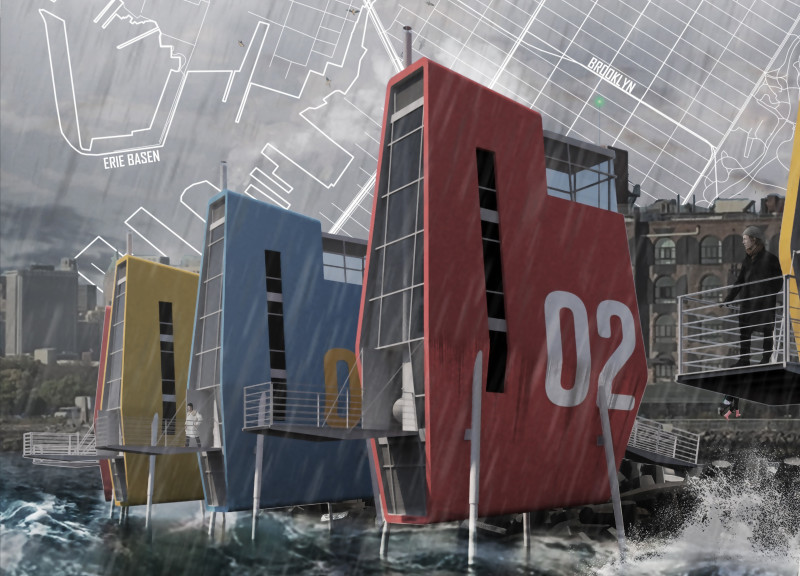5 key facts about this project
The Compact Home for Coastal Resilience (CHCR) is situated at the Erie Basin Harbor in Red Hook, Brooklyn, and aims to provide a solution to the challenges of climate change and rising sea levels. The design focuses on creating sustainable living spaces for young professionals while enhancing the ecological health of the waterfront. The overall concept emphasizes modularity and adaptability, ensuring the homes meet the varying needs of their environment.
Modular Design
The design employs a modular approach, allowing for flexibility in construction. Each unit is elevated on adjustable height support legs, enabling adaptation to different ground conditions and projected flood levels. This elevating feature protects the homes from flooding and contributes to the stability of the shoreline, making the units suitable for areas that face extreme weather risks.
Energy Efficiency
A significant aspect of the CHCR is the use of Tidal Energy Converters (TECs) mounted on the support legs. These devices harness energy from tidal currents and convert it into electricity for the homes. Any excess energy produced can be returned to the local power grid. This feature enhances energy independence for the residents and supports the community’s overall resilience to energy demands.
Ecological Restoration
The design also emphasizes ecological restoration. It includes the establishment of oyster habitats, which contribute to natural water filtration and help protect the coastline. Additionally, a breakwater revetment made from concrete Dolos provides further flood protection, enhancing the area’s defenses against storm conditions. These elements align the architectural vision with principles of environmental care.
Sustainable Construction
Sustainability is a core focus in the construction process. The use of Structural Insulated Panels (SIPs) contributes to high thermal efficiency, reducing the energy demands of the units over time. Incorporating modern shipbuilding techniques minimizes waste and maintains quality during construction. This reflects a responsible approach to resource management within the architectural design.
Each CHCR unit represents a practical response to the needs of coastal living. By integrating functionality with ecological awareness, the design demonstrates a commitment to creating homes that are resilient and supportive of their surrounding environment.



















































